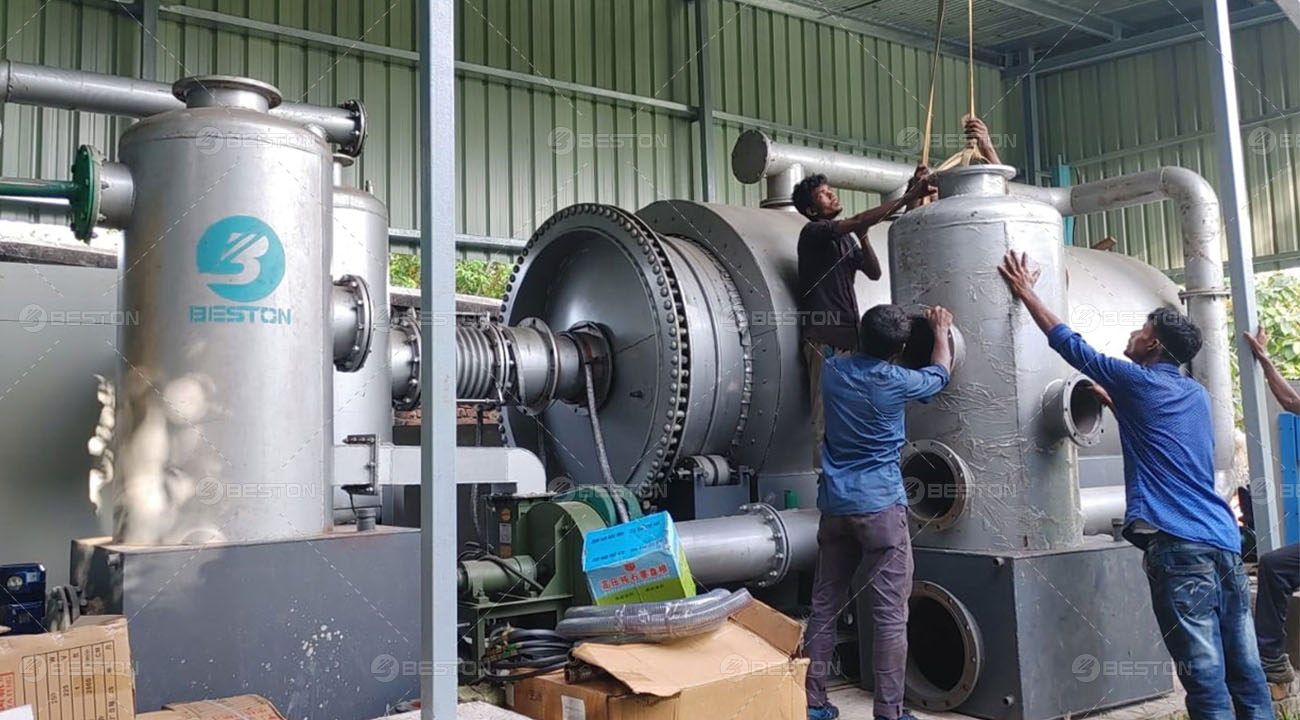In the realm of sustainable waste management solutions, tyre pyrolysis has emerged as a transformative force, turning discarded tyres into valuable resources. In this article, we embark on a journey to explore the cost dynamics, operational intricacies, and investment potential associated with tyre pyrolysis plants, shedding light on the compelling prospects this technology holds.
Tyre Pyrolysis Plant Cost
The cost of a tyre pyrolysis plant is shaped by a multitude of factors, forming a spectrum that accommodates varying budgets. Plant capacity and scale play a crucial role, with larger facilities generally incurring higher costs. Technological advancements and automation features also contribute to the price range, reflecting the level of innovation and efficiency. The quality of materials used in plant construction and adherence to safety standards impact not only the initial cost but also the long-term performance. Dissecting the cost reveals a blend of elements, including the base plant cost and additional enhancements, as well as anticipated operational and maintenance expenses.
What Does the Cost Include?
The tyre pyrolysis plant cost encompasses more than just the main processing unit. It spans across various components that collectively ensure the smooth functioning of the plant and adherence to safety standards. The equipment and infrastructure package encompasses the pyrolysis reactor itself, along with emission control systems and safety measures that mitigate potential hazards. Additionally, pre-processing machinery, such as tyre shredders and material handling facilities, form an integral part of the investment, contributing to the overall efficiency of the plant.

How to Operate a Tyre Pyrolysis Plant
Operating a tyre pyrolysis plant involves a systematic approach that maximizes efficiency while ensuring safety and compliance. The process begins with meticulous feedstock preparation, including the shredding and sizing of waste tyres for optimal thermal breakdown. Controlled feeding of the shredded tyres into the pyrolysis reactor initiates the thermal decomposition process, resulting in the generation of pyrolysis oil, gas, and char. Efficient collection and processing of these products are key to maximizing yield. Moreover, waste gas and emission management, involving scrubbing and treatment, is pivotal for meeting environmental regulations and minimizing the plant’s ecological footprint.
Investment Prospects in Tyre Pyrolysis Plants
The investment potential in tyre pyrolysis plants spans across various groups with diverse motivations. Entrepreneurs in the waste-to-energy sector can tap into this technology to address waste management challenges while contributing to sustainable energy solutions. By converting tyre waste into valuable resources, they align with circular economy principles, nurturing a greener economy. Environmental enthusiasts and green initiatives can also find their niche in tyre pyrolysis plants, as these ventures actively work towards mitigating the environmental impact of tyre waste through innovative technologies.
Conclusion: Unleashing the Potential of Tyre Pyrolysis Plants
Successful investment in tyre pyrolysis plants hinges on informed decision-making that considers both short-term costs and long-term benefits. Weighing upfront expenses against the potential for returns is crucial, especially when coupled with a comprehensive evaluation of the environmental and economic impact. As we navigate the evolving waste management landscape, tyre pyrolysis plants present an avenue for embracing innovation and fostering sustainable growth. By investing in this technology, individuals and industries not only unlock the potential for economic gain but also contribute to a cleaner, more sustainable future.
Comments
No comments yet. Be the first to react!